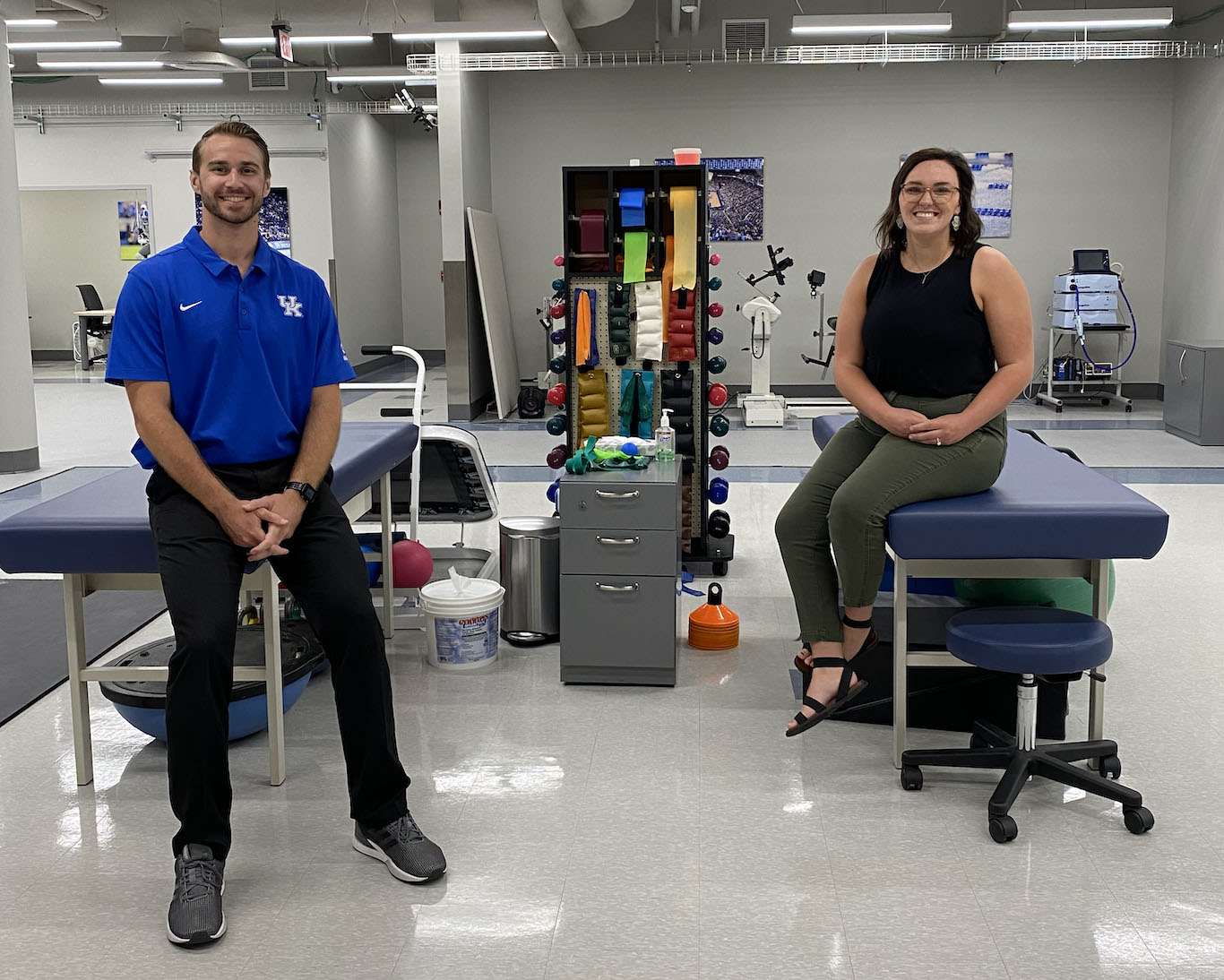RHB Student Studies Sleep Quality, Call Volume of Local Firefighters
Jan 13, 2022By Ryan Clark and Ellee Sidebottom
CHS Contributors
When Jacob Jelmini came to Kentucky, he knew three things about the state: horses, basketball and bourbon. He’d soon find out a lot more.
In 2017, Jelmini — an athletic trainer — started looking into getting his PhD. He wanted to find a program that had both clinical and research aspects, which proved to be difficult until he came across the Rehabilitation and Health Sciences Program at UK.
“I attended the American College of Sports Medicine (ACSM) National Conference to present my master’s thesis and just happened to talk to Dr. Nick Heebner, who is the current director of the Sports Medicine Research Institute (SMRI),” Jelmini explained. “He told me about the program they were trying to start, which was a partnership with the Lexington Fire Department. It really piqued my interest, so that’s how this all started.”
So Jacob Jelmini, MS, LAT, ATC, CSCS, moved to Kentucky from California to pursue his PhD in Rehabilitation Science in the College of Health Sciences and work with the SMRI.
Jelmini is currently working on a research project with the Lexington Fire Department studying “Occupation stress exposure, sleep quality, and musculoskeletal injury in urban firefighters.” The study will determine the effect of emergency call volume and the call frequency on stress exposure and sleep quality among urban firefighters.
He was granted $16,089 to support this research project by the Central Appalachian Regional Education and Research Center (CAREC). The project period started in July 2021 and will continue until June 2022.
Jennifer Tinsley, MS, LAT, ATC, is also a PhD student at UK and an athletic trainer for the Lexington Fire Department, working with Jelmini.
“I find this work incredibly fulfilling,” she said. “The opportunity to serve those who serve our community is so humbling and rewarding for me as a clinician, researcher, and community member. I am very excited to see how this program can hopefully grow and develop as we progress.”
So what does the project entail and what has he found so far? We asked him just that. Here are 5 questions with Jacob Jelmini, MS, LAT, ATC, CSCS:
What were the overall goals of this project?
To research why firefighters are getting injured and how call volumes and frequency impact sleep time and quality. Then, find a way to help prevent and improve the challenges they face.
How are you applying your skills as an Athletic Trainer to this project?
With this project, we are taking the skills and knowledge that we’re known for in the athletic world and applying it in a new way and with a new group of people. In my opinion, firefighters are athletes. Their jobs rely heavily on their physical strength and ability. They carry 70-80 pounds worth of gear with them on jobs and have to work in many different environments. A firefighter’s typical week is one 24-hour shift, then 48 hours off, then another 24-hour shift, and so on and so forth. This schedule can have a huge impact on their physical, mental and emotional health. I wanted to find a way to apply my skills and knowledge in Athletic Training to help people in this occupation improve their health, which is how this project started.
What is the connection between sleep and the job requirements of being a firefighter?
A huge theme and issue with the firefighters I talked to was sleep. Poor sleep quality has been shown to increase occupational stress scores, as well as increase the chance of musculoskeletal disorders. Furthermore, I found that if the firefighters are unable to physically recover from their shift, then they are going to continuously have poor sleep quality, increased occupational stress scores, and higher possibility of musculoskeletal disorders.
This is also where call volumes come into play as well. For example, in a station with a low call volume, their team may be able to sleep through the night, let’s say a full eight hours. Compared to a station with a high call volume, like 13-14 calls per day, they may get one hour of sleep during their shift. Additionally, even during that hour, it may not be good quality sleep. That is a huge disparity and compounded over days, months, and years, it can have a huge impact on their physical and mental health.
What does the next step of this project look like?
With everything that I’ve been doing for this project, I applied for — and was granted — $16,089 to help support this research. Now, the next part of our project is using wrist band sensors that track heart rate variability, which is essentially just tracking the electrical signals of your heart and using this to see how well you recover from activity. We plan on starting data collection and observation through this next semester and then potentially having that data analyzed by the end of the year. We are so fortunate to get our application accepted because we can use that money to help purchase some of these monitoring wrist bands to continue our research.
What does your future look like?
I would love to continue doing research like this and even applying it in other cities and states. I want to continue wearing my “two hats,” my research hat and my clinical hat, because doing research is so beneficial. But actually applying it means helping people with the information you’ve learned and gathered, and I think that’s the best part of it.
